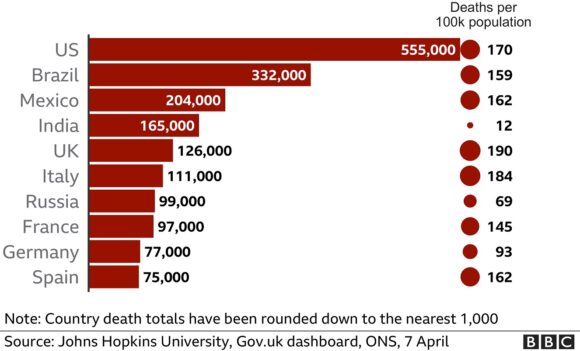
Credit…Derrick L. Turner/Michigan State University
Dear Commons Community,
The New York Times has a featured article this morning on a seed viability experiment at Michigan State University that has been going on for 147 years. It was started by a botanist, William James Beal, in 1847 to determine how long seeds can lie dormant in the soil without losing their ability to germinate. Every 20 years, the experiment’s caretakers go to a secret location to dig up a bottle of seeds and scatter them over a tray of sterile soil and see which ones grow.
It is quite possibly one of the world’s longest-running experiments. I found the article and the project fascinating especially since today is “Earth” Day. Below is an excerpt.
Tony
One of the World’s Oldest Science Experiments Comes Up From the Dirt
On Thursday morning, several hours before sunrise, Marjorie Weber arrived at a rendezvous spot on the campus of Michigan State University. Three of the school’s other plant scientists were already there, waiting in dribbling snow. As they stood around blowing on their hands, the fifth member of their crew, Frank Telewski, “emerged from the darkness with a shovel slung over his shoulder,” Dr. Weber said.
With everyone else crowded around, Dr. Telewski, the group’s leader, pulled out a copy of a map, drawn like an architectural blueprint. It would guide them to a botanist’s version of buried treasure: a bottle filled with sand and a bunch of really old seeds.
Dr. Weber and her colleagues are the latest custodians of the Beal seed viability experiment: a multicentury attempt to figure out how long seeds can lie dormant in the soil without losing their ability to germinate. Every 20 years, the experiment’s caretakers creep out to a secret location under cover of night, dig up a bottle, scatter its seeds over a tray of sterile soil and see which ones grow.
It’s one of the world’s longest-running experiments, having already gone on for 142 years. And the botanists in East Lansing hope that it will last for at least another 80.
What started out as a straightforward attempt to measure seed persistence has grown into a more interesting experiment as the decades pass. With technology improving and knowledge increasing, the keepers of the cache can do more than just count each bottle’s successful sprouts. They can look inside seeds to see how they tick, begin to determine what accounts for longevity — and even, in some cases, get species that seemed done for to spring up again. Lessons from their work could help with everything from restoring damaged ecosystems to storing crop seeds for the long-term.
But first, they had to find where to dig.
The bottle the team was looking for contains over a thousand seeds: 50 each of 21 different species, from black mustard to white clover to redroot amaranth.
In 1879, William James Beal, a botanist at Michigan State, filled 20 such bottles and buried them in a row somewhere on campus. He figured he — and later, his successors — could dig one up every five years and plant the preserved seeds inside.
When seeds are shed by their parents, they don’t always grow right away. Under any given patch of land, there’s a constellation of sleeping seeds, “biding their time,” Dr. Weber said. Often, they lie dormant — for a season, a few years or even longer — until they get the right set of cues to sprout.
This plant reserve is known as the seed bank. By experimentally recreating it, Dr. Beal hoped to better understand how long plants could last in the soil, and what triggers them to grow. He was likely trying to help local farmers — frustrated by endless weeding, and wondering how long it would take “before they might have some hope of seeing a decline in the seed bank, and their workload going down,” Dr. Telewski said.
For the first few rounds of the experiment, a number of species flourished, with seeds growing readily after 10, 15 or 20 years. As the decades passed, most dropped off one by one. Only one reliable sprouter is left: Verbascum blattaria, a splay-leaved, yellow-flowered herb. Nearly half the Verbascum seeds from 2000’s bottle bloomed, even though they’d been in stasis underground for over a century.
Today, farmers don’t really need the kind of help with weeds that motivated Beal to bury his bottles. But plant scientists have become invested in the question of which seeds last and how for other reasons.
The soil seed banks underlying different habitats are “great unknowns” in restoration ecology, as experts try to promote native species while fending off invasive ones, said Lars Brudvig, an assistant professor at Michigan State and another member of the Beal seed experiment team. In some cases, seeds of endangered or long-lost plants may even be hiding out in the soil.
Other researchers working on questions of longevity and germination might save seeds in climate-controlled environments, or study very old ones that they happen to find. But Dr. Beal’s is the longest-running seed experiment to mix natural conditions with carefully recorded data, said Carol Baskin, a professor of plant and soil sciences at the University of Kentucky who has used its results in her work.
“I think Professor Beal’s got the top experiment here,” Dr. Baskin said. “I wish he’d have buried more bottles.”
Armed with shovels, gloves and headlamps, the team followed their map to the dig site. The vibe was “very piratey,” Dr. Weber said. Dr. Telewski set to digging a neat, squared-off hole.
But as they carved deeper and wider, there were no bottles to be found. “The birds were starting to chirp,” Dr. Weber said, and the sun threatened to blow their cover. “Morale was low.”
When Dr. Beal first buried the seed bottles, he planned to have one dug up every 5 years, and for the experiment to last a century. But as time passed, those in charge extended the span between digs to 10 years, then 20. Two have been slightly delayed: 1919’s was moved to the spring of 1920 — which Dr. Telewski suspects may have been related to the 1918 flu; and 2020’s was moved to this year, because of Covid-19-related campus shutdowns.
To avoid losing the thread across these decades, a sort of ministry of seed-keepers has developed at Michigan State, with each generation of botanists passing the torch to younger colleagues.
Dr. Telewski — a professor of plant biology at the university, and the seventh person in charge of the experiment — dug up his first seed bottle in 2000 with his predecessor, Jan Zeevaart, who died in 2009. A couple of years ago, mulling his own mortality, he gave a copy of the map to David Lowry, an associate professor of plant biology who had expressed interest in joining up.
Just a couple of months later, Dr. Telewski suffered a stroke. While he has since recovered, “it just showed me how delicate it is to hand these things off while keeping them secret,” Dr. Lowry said. Soon after, Dr. Telewski invited Dr. Weber, who is an assistant professor at the university, and Dr. Brudvig to get involved as well.
Over the years, what were purely practical decisions by Dr. Beal have developed a patina of mystique. Dr. Beal excavated each new bottle under cover of darkness not to be dramatic, but simply to protect the other bottled seeds from sunlight, which might cause them to germinate before their time, Dr. Telewski said. (The team uses green bulbs in their headlamps for the same reason.)
The paper map was drawn after the landmarks that originally indicated the bottles’ location were moved. And the stealth is newly necessary because the older the experiment gets, the more interest it draws, he said.
These “cloaked, secretive” elements are now part of the experiment’s charm, Dr. Weber said. But it’s camaraderie and a desire to see the experiment through that keeps things going. The night before the dig, Dr. Telewski sent a pump-up email to the group. It included his own five-verse reimagining of Simon & Garfunkel’s “The Sound of Silence.” A sample lyric: “Hello bottles my old friends / I’ve come to dig you up again








